March is Developmental Disabilities Awareness Month. According to the Centers for Disease Control and Prevention (CDC), “Developmental disabilities are a group of conditions due to an impairment in physical, learning, language, or behavior areas.”
At Children’s Minnesota, we have a program called the Families as Partners (FAP) program. This program is for families with a child who is currently a patient at a Children’s Minnesota clinic or hospital or has previously been a patient. This program offers diverse opportunities for involvement, including sharing your story, educating staff, providing peer-support and advocating for pediatric policy issues.
Our FAP families provide advice
For Developmental Disabilities Awareness Month, we asked four families from our FAP program to give tips for how families with ‘typical’ kids can include kids with disabilities. You’ll hear about:
- Willette and her son Kellan’s experience
- Ashley and her son Declan’s experience
- Beth and her daughter Anna’s experience
- Jill and her son Deacon James’ experience
How can families with ‘typical’ kids include kids with disabilities?
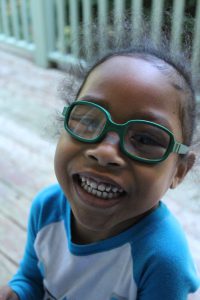
There is a fine line in balancing the schedules and activities for both our typically developing child and our child with disabilities. The biggest thing to consider is that the child with the disability wants to feel included. At the end of the day, everyone just wants to belong.
Birthday party/play date tips:
- For activities such as birthday parties and play dates it is imperative that my child with a disability feels just as welcomed as the typically-developing child. Vernā Myers said, “Diversity is being invited to the party. Inclusion is being asked to dance.” This same principle applies here. It doesn’t help if my child with a disability is invited to the party if he can’t enjoy the festivities and/or activities of the party.
- Don’t get me wrong, it is totally understood that my child with a disability cannot do everything that my typically-developing child can without adaptions, accommodations and modifications. So as a parent, I will make sure that if my child with a disability is invited to a birthday party, is there at least one activity that my child can participate in? And as I set up play dates for children with other disabilities, I am sure to include activities that children with varied abilities can participate in. I believe that is key. We have to be other minded. Meaning that we have to expand our thinking to include others that are outside of our circle. We should ask the question, “Can everyone participate to some degree and at some level?”
Move toward those different from you:
- We have to remember that it is our sameness that draws us to each other not our differences. Sometimes parents with typically developing children believe that they have to do so much more to provide accommodations and that simply is not the case.
- As parents of children with disabilities, we get that it may be uncomfortable for typically developing children and their parents to interact with those who are different from them. We get that! I would encourage those families to move toward those who seem different from us and extend kindness and compassion.
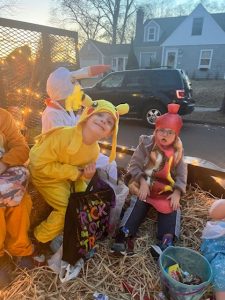
Inclusion is simply the absence of exclusion
Sometimes, inclusion is simply the absence of exclusion.
- It’s important to remember to engage in activities that Declan is interested in, and not always expect him to come to us. Sometimes this means he watches. For example, Declan loves to watch his brother and friends play Mario Kart™. He feels included as he cheers them along. And the other kids enjoy his participation.
- There’s no easy answer to this question, because it’s so different for every child, or even different between days or weeks for the same child. What helps us is: Remember that while certain things are completely off limits, many activities are not. And, participation doesn’t always look the same for every participant.
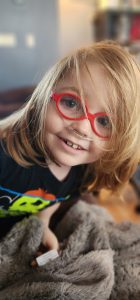
Keep inviting us
Include us by inviting us and keep inviting us. Often, we cannot come but that doesn’t mean we do not want to be there.
Birthday party/event/play date tips
- When able ask us how the event could be more accessible. Sometimes it is as simple as leaving the driveway open at your house so we can park and get our son out safely.
- We have a friend who wanted our son to be able to go to her son’s birthday party. She asked me before the event what we would need for him to be able to go. She was so thoughtful and realized that not all spaces are created equally.
Tips for ways to include a child with a disability
Be aware of what the limitations are
- If a child struggles with loud noises and you are taking them to a birthday party in a public location, maybe bring headphones for the child.
- If the child has extreme sensitivity to bright lights, make sure you have a large umbrella or other shaded area for outside activities.
- Depending on the child, inclusion doesn’t always mean participation. My son absolutely loves watching other kids play games. He feels included if he is invited to watch and people speak to him.
Accessibility awareness
- When including someone with a disability be aware of accessibility. We become so used to being able to walk around obstacles that we forget not everyone can.
- Think of bathrooms or changing spaces. Can a private space be made accessible?
Just ask
- And, the last tip is to not be afraid to ask the family or person if there is anything they need to attend this event comfortably and safely.
How to talk to your ‘typical’ child about including a child with a disability?
Questions instead of assumptions
Most people in the disabled community will tell you that we prefer to be asked questions versus have assumptions made. When asked with compassion, questions do not need to be offensive and can open dialogue.
- I recently spoke to my son’s first grade class about his disabilities and opened it up for questions. I made sure to use plain language and to treat each question fairly. As the kids realized they could ask their questions without fear of getting in trouble or offending anyone, hands shot up around the room. Children are curious and follow the example set for them by their trusted adults. And, Declan loved the attention he got from his class.
- It’s important to remember that not all disabilities can be seen.
Don’t ignore their disability
Treating people with disabilities as equal does not mean ignoring their disability. See them and see the world as they experience it. Don’t be afraid to ask them if they need anything but please don’t assume they do.
Do you have an example of a time when your child was included and it went well?
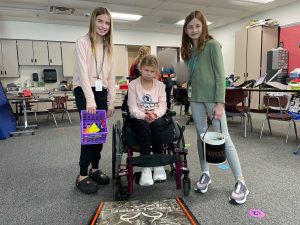 Example of forming friendships
Example of forming friendships
The following is an example of our daughter, Anna, forming a friendship with some classmates in her fifth-grade class at school: While Anna spends most of her days in her special education program classroom, she does go into her fifth-grade class for morning meeting, all specialist classes and recess. Anna’s school team wanted to give her a chance to get to know a small group of kids on a more personal level, since she had not had as many chances to be involved with her grade level class for the past couple years due to the COVID-19 pandemic.
They started with three girls that were in Anna’s group for physical education. Anna’s teacher asked her if she would like to invite these girls to come to her class during recess and she said yes. It went well and led to more interest in spending time together. Those same girls have continued to ask their teacher if they can hang out with Anna every Wednesday. Sometimes Anna picks an activity before they get to the room and sometimes, she picks a few choices and they decide together. Sometimes they just hang out and learn more about each other. Anna loves to ask them questions. We forgot about their hangout time for one week and her friends were disappointed.
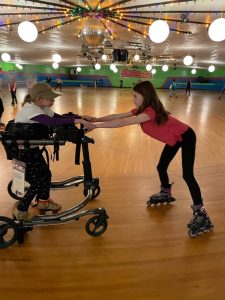 They made arrangements to come back the next day! Here are more examples of this great friendship:
They made arrangements to come back the next day! Here are more examples of this great friendship:
- Anna’s birthday was not on a Wednesday and the girls asked if they could change their day so they could be with Anna on her birthday; it was so sweet.
- When the fifth graders went on their field trip to Skateville, Anna’s friends asked to skate with her. It was so beautiful to see the joy for everyone!
- Anna is learning how to take turns and hang out with her friends. Her friends have learned about Anna and her ability to talk using a communication device and her ability to play games they all like to play.
We are so grateful that Anna’s teachers and paraprofessionals were able to help facilitate the opportunity for her to make and nurture these friendships. I know Anna values her new friends and thoroughly enjoys their time together.
Want to join Families as Partners?
Learn more about how you can get involved in Families as Partners pathways by contacting Tessa Billman, patient- and family-centered care coordinator, at 612-813-7407 or [email protected].